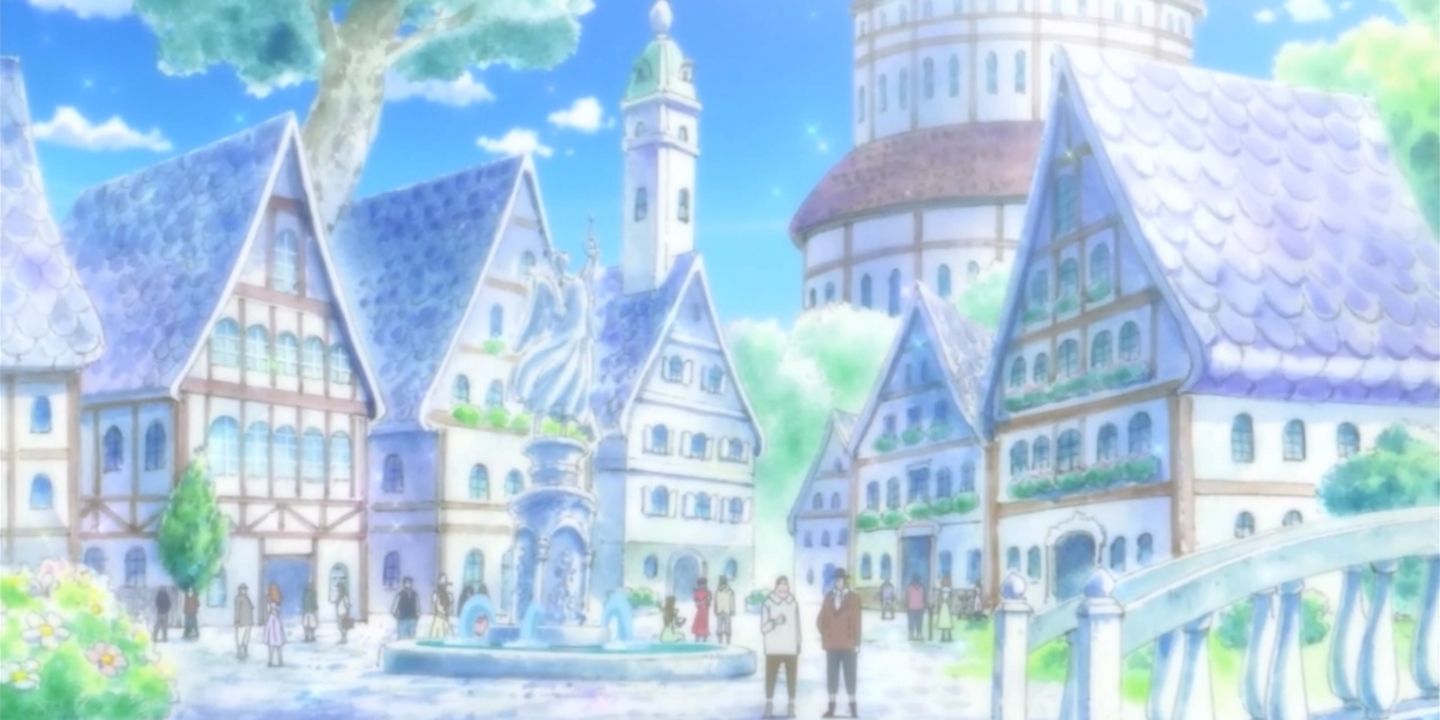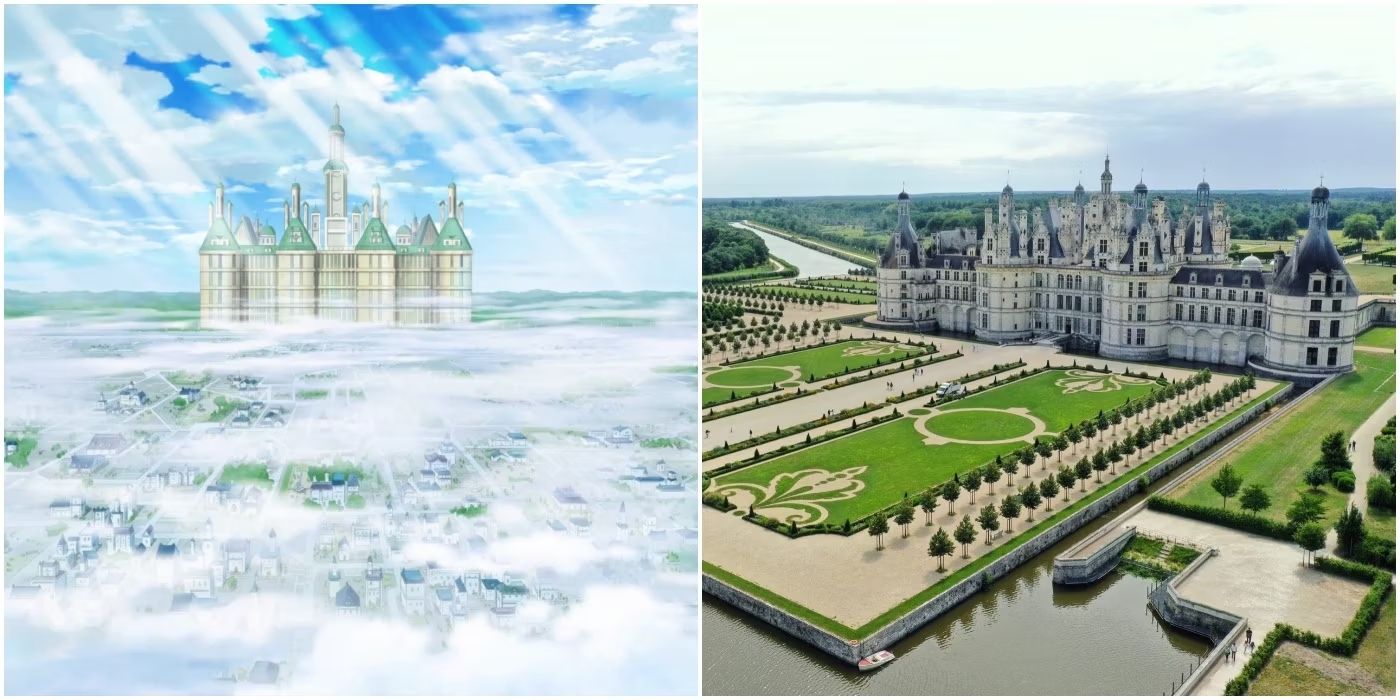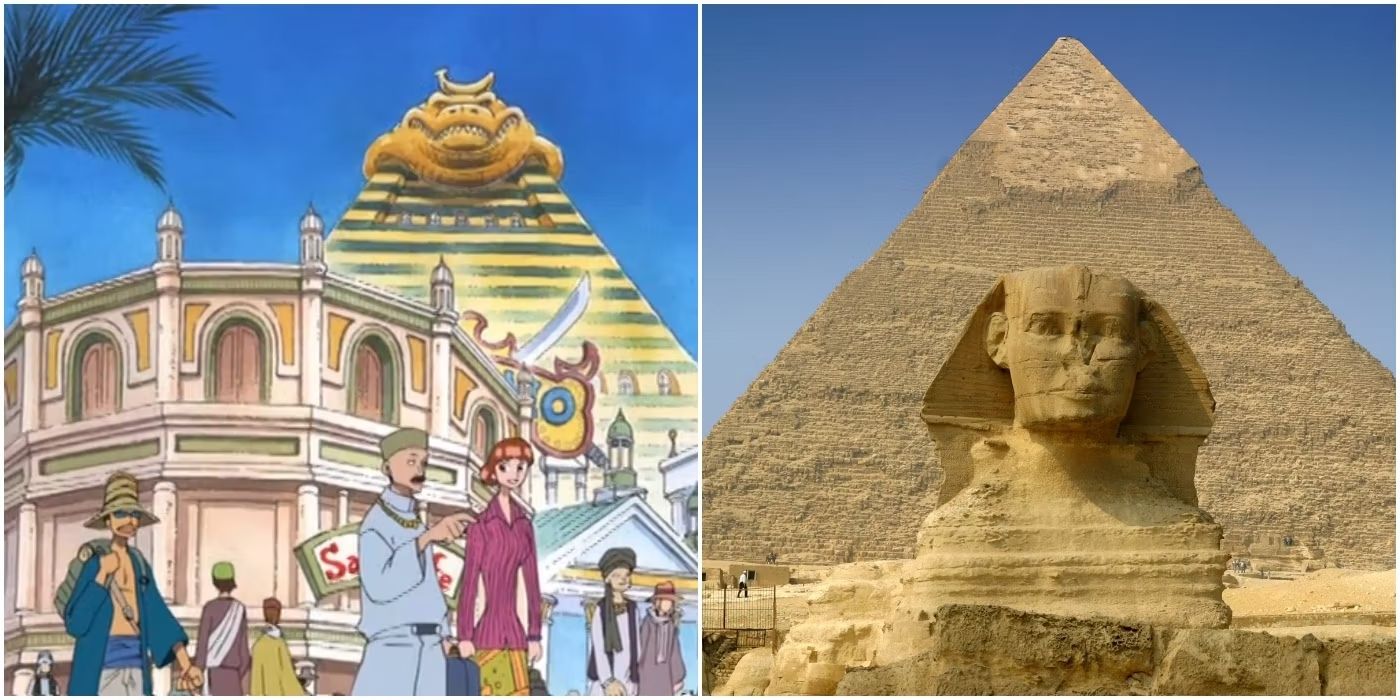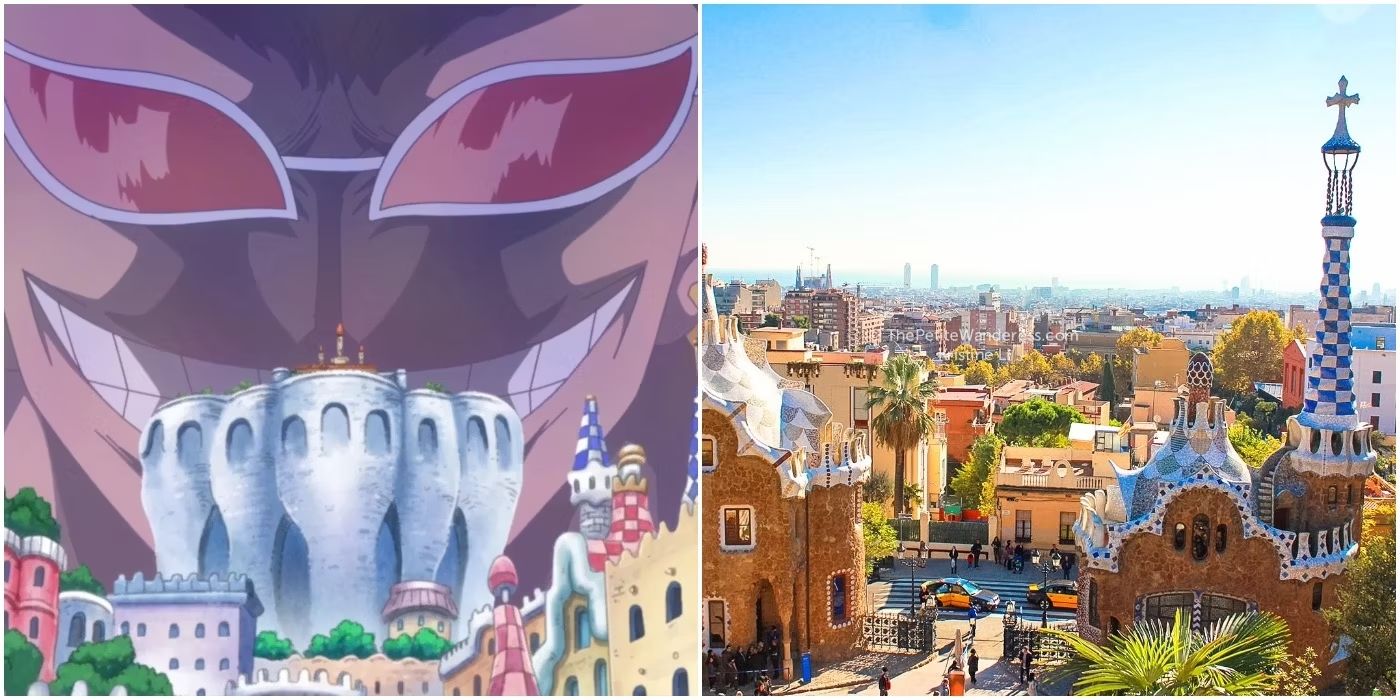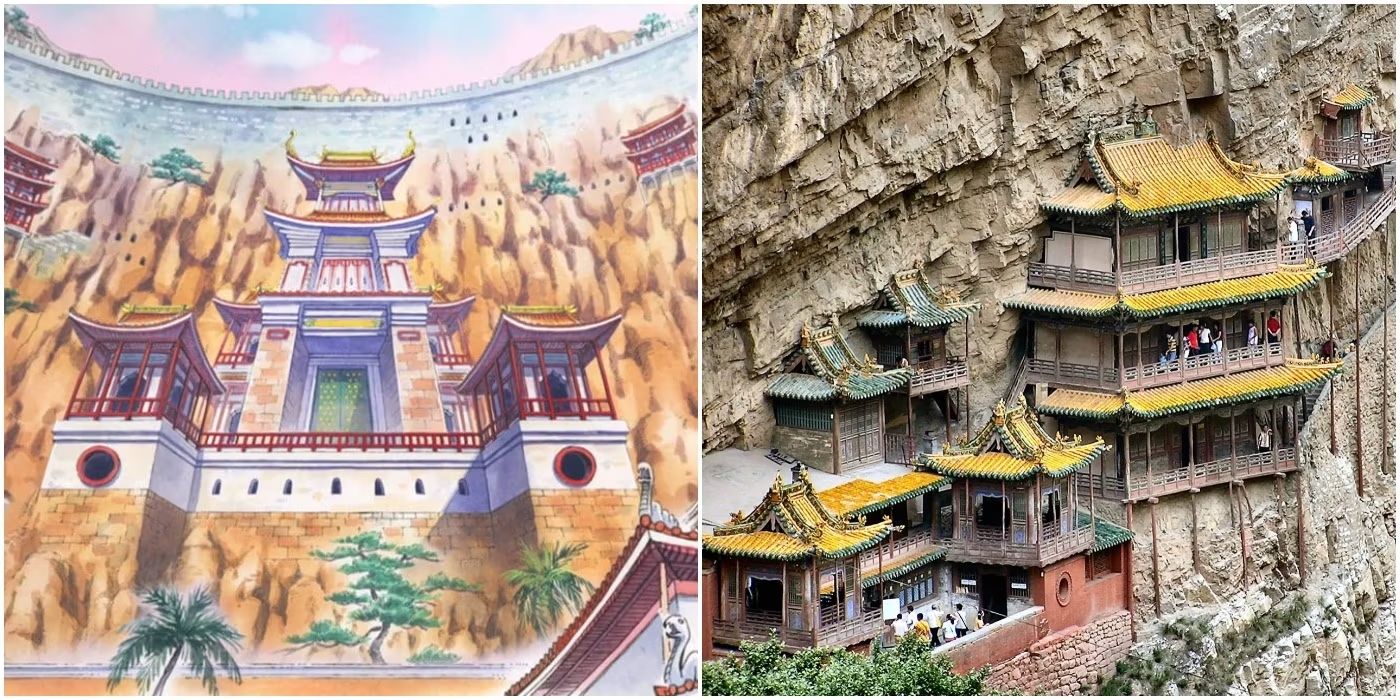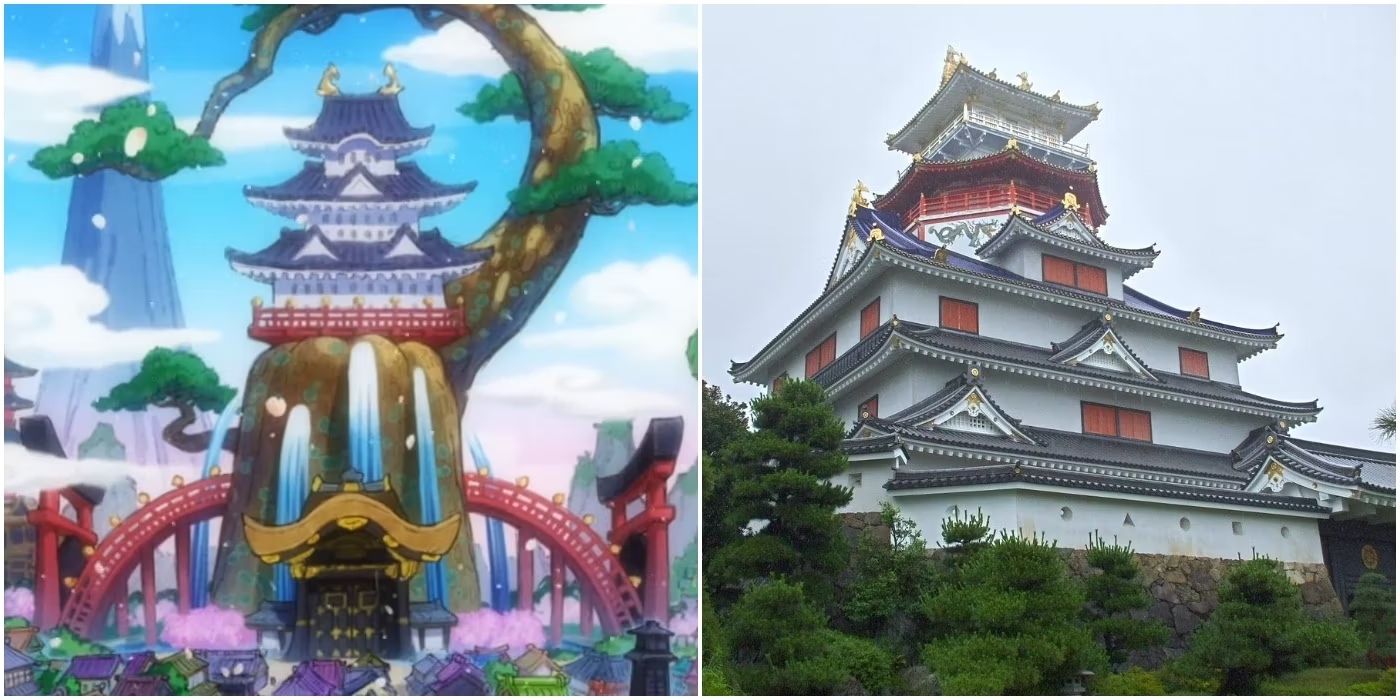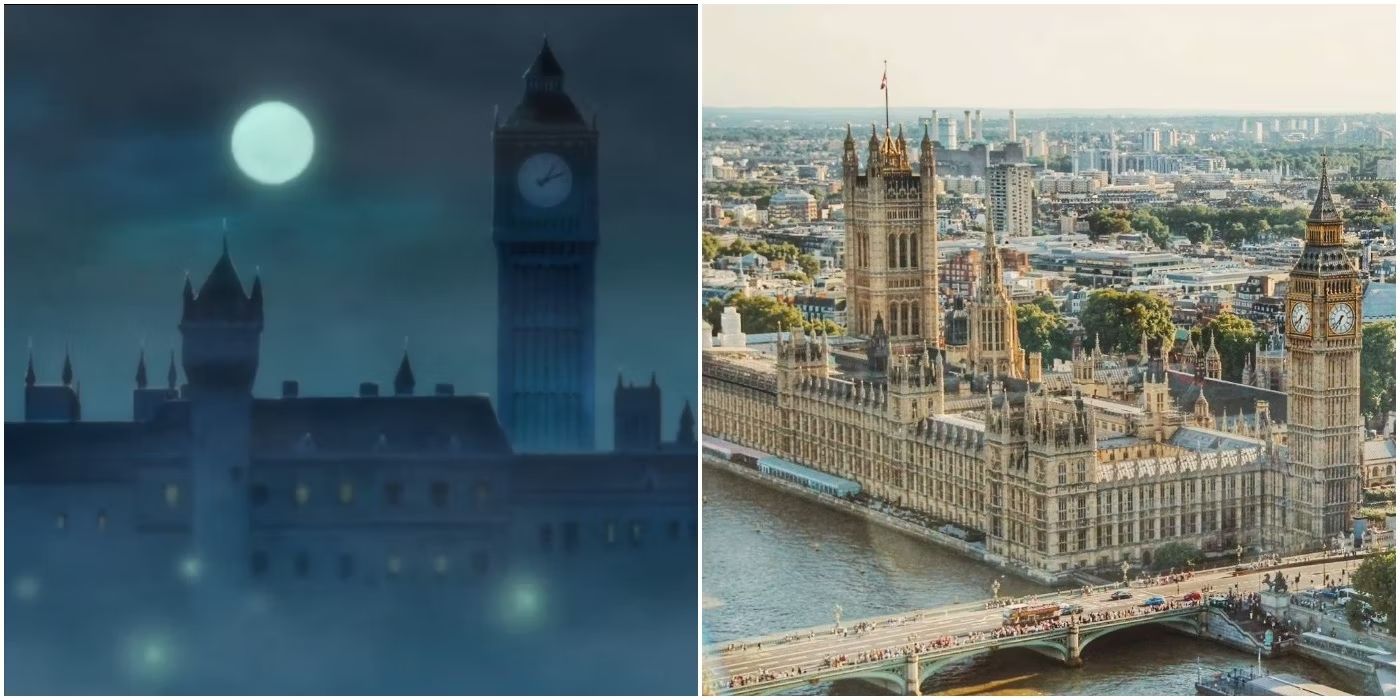One Piece is one of the most successful adventure and action anime and manga series in history. Since 1997, the series has created a benchmark for anime, and the stellar world of the franchise makes the series all the more captivating. With the complexities of multiple storylines, the series also requires multiple background settings. The unique architecture that Oda creates perfectly complements its adventure genre. However, several of those architectural marvels are inspired by real-life places.
It is not unusual for anime to take real-life inspiration for their art, and for One Piece as well, a lot of islands and locations draw inspiration from real places. The architectural marvels of the series are relatable to various places such as London, Egypt, Spain, and France. Here are some of the One Piece islands that draw inspiration from real-world locations and architecture.
Mariejois
The Holy Land of Mariejois is just as heavenly as the name suggests. It is an important place that serves as the capital of the World Government. Mariejois accommodates the Five Elders, the World Nobles and Commander-in-Chief Kong, from where they govern the world. It's also where Levely is -- a council that all the royalties affiliated with the Word Government attend. It is a sacred place where not everyone is allowed entry. This place draws inspiration from a French castle, Château de Chambord.
This castle is one of the finest examples of French renaissance architecture out there. The combination of classical Renaissance structures and traditional medieval French forms created one of the architectural marvels of the world. The conical domes, spires, windows and arches of Mariejois all bear a striking resemblance to the French castle. Although Oda never confirmed it, one can easily see the similarities after looking at both buildings.
Arabasta
Arabasta was the fourth island the Straw Hats visited in the Grand Line. The kingdom's history traces back to the void century. The Arabasta Kingdom was among the 20 founding kingdoms that formed the World Government. However, the rulers of Arabasta, the Nefertari family, never ascend to Mariejoies and instead continue to rule their kingdom for centuries. The Arabasta arc was an important turning point in the series, with a lot of special events being covered here. Luffy reunites with his brother Ace and goes toe-to-toe with a Warlord for the first time.
Moreover, it was the first time a poneglyph was seen, and fans also learn about the existence of the ancient weapons. According to Rurubu One Piece, the geography, architecture and culture of Arabasta were inspired by India. It also heavily resembles elements of ancient Egypt and the modern Middle East. The domes, minarets, arches and detailing all resemble the beautiful traditional architecture of the Middle East. The name of the Kingdom possibly comes from 'alabaster,' a mineral commonly found in ancient Egyptian artifacts.
Dressrosa
Dressrosa is a charming island in the New World with the Warlord, Doflamingo, as its ruler. It's also one of the 20 founding kingdoms of the World Government. However, deep beneath the glamorous facade of the kingdom lies a dark reality. Doflamingo allows those who support him to live freely while he punishes those who go against him. The colorful kingdom is certainly pleasing to the eyes, and fans may be able to relate the architecture to Spain, particularly Park Güell in Barcelona. Not only the architecture but also the attire of the people and the flamenco dancers are all very Spanish in essence.
In addition, the passionate murders that are a daily occurrence in Dressrosa are derived from Spanish literature, particularly during the Romantic era in the 19th century. The architecture of both Dressrosa and Park Güell has the characteristic features of Modernisme, such as the organic form of architecture, curved lines and vivid colors. Moreover, the Corrida Colosseum in Dressrosa is somewhat similar to the Colosseum of Rome. They are both four-story buildings with similar columns, arches and circular forms. The massive stone structure in both the real and fictional worlds are enchanting in their own ways.
Amazon Lily
This island is an empire of women located in the Calm Belt. The people living there are from the Kuja tribe and the members of the Kuja Pirates. Boa Hancock is both their captain and empress. During the "Sabaody" arc, Kuma splits the Straw Hats and sends them to different places. Luffy reaches Amazon Lily -- the first time fans see the magnificent empire of the Sea Empress. Oda has confirmed that Amazon Lily is inspired by and modeled after China. The architecture and decor of the island resemble that of ancient China, while the Kuja castle resembles the Hanging Temple. Both buildings are supported by a giant mountain.
The sloping roofs of the castle, the structure, supporting columns, basic forms and colors are all similar to the Hanging Temple. It's not just the palace but also some houses on the sides of the mountain that feature ancient Chinese housing. The combination of white, red and gold gives an ancient Chinese aesthetic that is easy to spot. Even the layout of the buildings and city are similar to ancient China. In both Amazon Lily and ancient China, the layouts and forms of the buildings are similar, whether it's the home of a rich family, a poor family, a temple or a palace.
Wano Kuni
No other arc in One Piece has given viewers as many iconic scenes as much as the "Wano" arc. This is something that fans have waited on for almost a decade. Now that it's finally out there, the background setting is clearly similar to that of Japan, the home of anime. That's to be expected, considering the concept of samurai and ninja from the Land of Wano. The industrialization brought by Kaido ruined most of the country, with only the Flower Capital left untouched.
The beautiful landscape and cherry blossoms in the city are captivating, to say the least. As for the architecture, it mostly resembles the Edo period of Japan, where the architecture consisted primarily of thatched roofs, wood and mud floors. The castle in the Wano Kingdom is similar to Ninja Kingdom, a theme park in Mie, Japan. The colors, forms, roof styles and little golden statues on the roof of the castle are all inspired by Ninja Kingdom. All that, paired with the colorful housing and wastelands, adds to the charm of the Wano country.
Rommel Kingdom
The Rommel Kingdom was only briefly mentioned in the series when Vice Admiral Bastille was speaking of Hakuba's legend in the "Dressrosa" arc. Hakuba, or as people call him, Cavendish, was a noble from the Rommel Kingdom but had to leave his home and be a pirate because of his double personality. Whenever Cavendish slept, his other half, Hakuba, would take control of his body and go on a killing spree, cutting down everyone in his path.
Anyone can recognize the reference to London's Clock Tower in the Rommel Kingdom. The stunning 19th-century Gothic Revival architecture is difficult to miss even when it's shown in an anime. The clock tower was designed with features such as lancet windows, gorgeous ornamentation, a spire and the use of stone.

